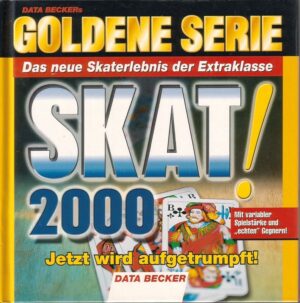Retro Replay Review
Gameplay
Wall $treet Trader 2000 drops you into a volatile global economy on the brink of collapse, tasking you with mastering the art of stock manipulation to restore stability. From your first tutorial session with the enigmatic Sir Fleming, you’ll learn the basics of buying low and selling high, gradually unlocking access to a wider range of stocks and commodities. The game’s interface presents real-time market data in an easy-to-read format, allowing you to execute trades with a single click once you’ve gauged the right moment. This immediacy infuses every transaction with a sense of tension—every decision feels weighty, and every market swing carries real consequences.
(HEY YOU!! We hope you enjoy! We try not to run ads. So basically, this is a very expensive hobby running this site. Please consider joining us for updates, forums, and more. Network w/ us to make some cash or friends while retro gaming, and you can win some free retro games for posting. Okay, carry on 👍)
As you progress, Wall $treet Trader 2000 introduces increasingly complex mechanics, such as margin trading, short selling, and commodity futures. These features aren’t just window dressing; they require strategic planning and risk assessment. You’ll find yourself weighing the risks of a hostile takeover against the potential rewards of a clean acquisition, or debating whether to time a raiding mission on a rival corporation’s assets. Each new tool added to your arsenal forces you to adapt your playstyle, keeping the gameplay loop fresh and challenging.
Raids and hostile takeovers serve as high-stakes mini-games embedded within the core trading loop. When you choose to orchestrate a corporate raid, you’ll switch to a realtime planning interface where timing and resource allocation decide success or failure. Pulling off a successful takeover yields significant market advantages and can tip your portfolio into the black, but failure can leave you overextended and vulnerable to counterattacks. These high-risk events provide a welcome diversion from standard buy-and-sell dynamics while reinforcing the power of strategic foresight.
Beyond the main campaign, Wall $treet Trader 2000 offers several sandbox modes and randomized market scenarios, ensuring high replay value. Veteran traders can set custom economic parameters—adjusting volatility, introducing unexpected black swan events, or simulating rival AI traders with distinct personalities. This freedom to tailor your experience means the game remains engaging long after you’ve mastered the core lessons taught by Sir Fleming. For those who crave a deep, data-driven trading simulator with adrenaline-pumping corporate warfare, the gameplay here delivers in spades.
Graphics
Visually, Wall $treet Trader 2000 embraces a sleek, minimalist aesthetic that prioritizes clarity over flashy effects. The HUD is intelligently designed, presenting critical information—stock tickers, portfolio breakdowns, and live newsfeeds—without overwhelming the player. A muted palette of blues and greys is punctuated by bright green and red highlights to indicate market gains and losses, ensuring you never miss a crucial data point. This clean presentation makes extended trading sessions comfortable on the eyes while reinforcing the game’s professional, high-stakes atmosphere.
Charts and graphs are rendered in crisp vector lines that update smoothly in real time, adding to the sense of immersion and urgency as markets fluctuate. Hovering over candlestick patterns or trendlines brings up contextual tooltips that break down technical indicators like moving averages or Bollinger Bands. While these features may come across as esoteric to newcomers, they’re indispensable to veteran traders looking for precision analytics. The responsive visuals make it easy to track long-term trends and execute split-second trades without fumbling through menus.
Corporate raid sequences and takeover animations offer a burst of personality within the otherwise restrained graphical style. Brief cinematic cut-ins depict your corporate operatives storming server rooms or sealing handshake deals in boardrooms, accompanied by dynamic lighting and quick camera pans. These sequences break up the trading grind and provide a tangible sense of progress when you successfully execute high-stakes maneuvers. They’re stylistic flourishes that enrich the overall presentation without overshadowing the game’s data-heavy core.
Although Wall $treet Trader 2000 isn’t a showcase for next-gen visuals, its interface design and fluid data visualizations are more than sufficient for a game focused on financial strategy. Occasional performance hiccups can occur when simulating extreme market crashes with thousands of data points, but these are rare and typically resolved by adjusting a few graphical presets. Overall, the game strikes an excellent balance between visual polish and practical functionality, ensuring that charts, numbers, and animations all serve the gameplay rather than detract from it.
Story
The narrative backdrop of Wall $treet Trader 2000 paints a dire portrait of a world teetering on economic ruin. Hyperinflation, resource shortages, and political unrest have converged to destabilize global markets. You, the rookie trader, are recruited by the shadowy Sir Fleming, a financial mastermind determined to avert disaster through calculated market interventions. Your journey unfolds across multiple continents, each presenting unique economic challenges and local conspiracies to unravel.
Sir Fleming acts as both mentor and moral compass, guiding you through complex financial instruments while cautioning against crossing ethical lines. His dry wit and cryptic advice lend gravitas to each lesson, making your progress feel meaningful. Along the way, you’ll encounter rival traders, government agents, and corporate barons who each have their own agendas. Engaging with these characters through dialogue trees adds depth, though your choices here rarely alter the core market mechanics—it’s more about flavor than branching narratives.
Key story missions revolve around preventing catastrophic events such as sovereign debt defaults or hostile takeovers of vital infrastructure companies. Completing these missions often requires you to employ a hybrid strategy of open-market trading and covert operations. Each successful intervention not only bolsters your reputation but also triggers global news alerts that affect market sentiment in real time. This integration of narrative and gameplay is one of the title’s strongest points, keeping you invested in both your portfolio and the world’s fate.
While the main plot is compelling, some side missions delve into repetitive territory—rescuing companies from bankruptcy or manipulating commodity prices in predictable ways. These detours can feel like padding, though they do offer opportunities to further develop your trading skillset. Overall, the story in Wall $treet Trader 2000 provides a solid framework for the gameplay, weaving a believable financial thriller that keeps you engaged without overshadowing the strategic core of the experience.
Overall Experience
Wall $treet Trader 2000 delivers a highly addictive blend of financial simulation and corporate warfare, offering hours of engrossing gameplay for strategy aficionados. Its real-time market dynamics and high-stakes raids create a compelling tension that few other titles in the genre can match. Whether you’re a seasoned trader looking for depth or a newcomer intrigued by the drama of economic brinkmanship, the game scales its complexity well, ensuring a satisfying learning curve.
The tutorial system, led by Sir Fleming, is both informative and characterful, gently holding your hand through the fundamentals before unleashing you into more ruthless market scenarios. After you’ve mastered the basics, the sandbox modes and custom scenarios extend replayability significantly. Community-created mods and scenario packs are already proliferating, adding new markets, regulatory twists, and narrative overhauls to keep the experience fresh well beyond the initial campaign.
On the downside, the steep learning curve and occasional UI clutter in the commodity markets can be intimidating to casual players. Those unfamiliar with financial jargon may feel overwhelmed at first, and the trial-and-error nature of some hostile takeovers can lead to frustration. However, the sense of accomplishment after orchestrating a flawless raid or navigating a brutal market crash is immensely rewarding and often worth the initial hurdles.
All told, Wall $treet Trader 2000 stands out as a unique and engrossing entry in the strategy and simulation space. Its polished interface, robust mechanics, and immersive narrative make it a must-play for anyone fascinated by the interplay of markets, power, and risk. If you’re ready to don the suit of a corporate strategist and steer the world away from economic collapse, this game offers an experience as thrilling as it is intellectually stimulating.
 Retro Replay Retro Replay gaming reviews, news, emulation, geek stuff and more!
Retro Replay Retro Replay gaming reviews, news, emulation, geek stuff and more!




Reviews
There are no reviews yet.